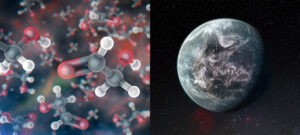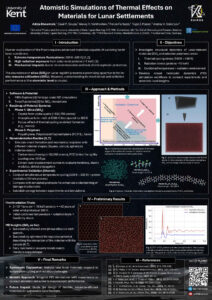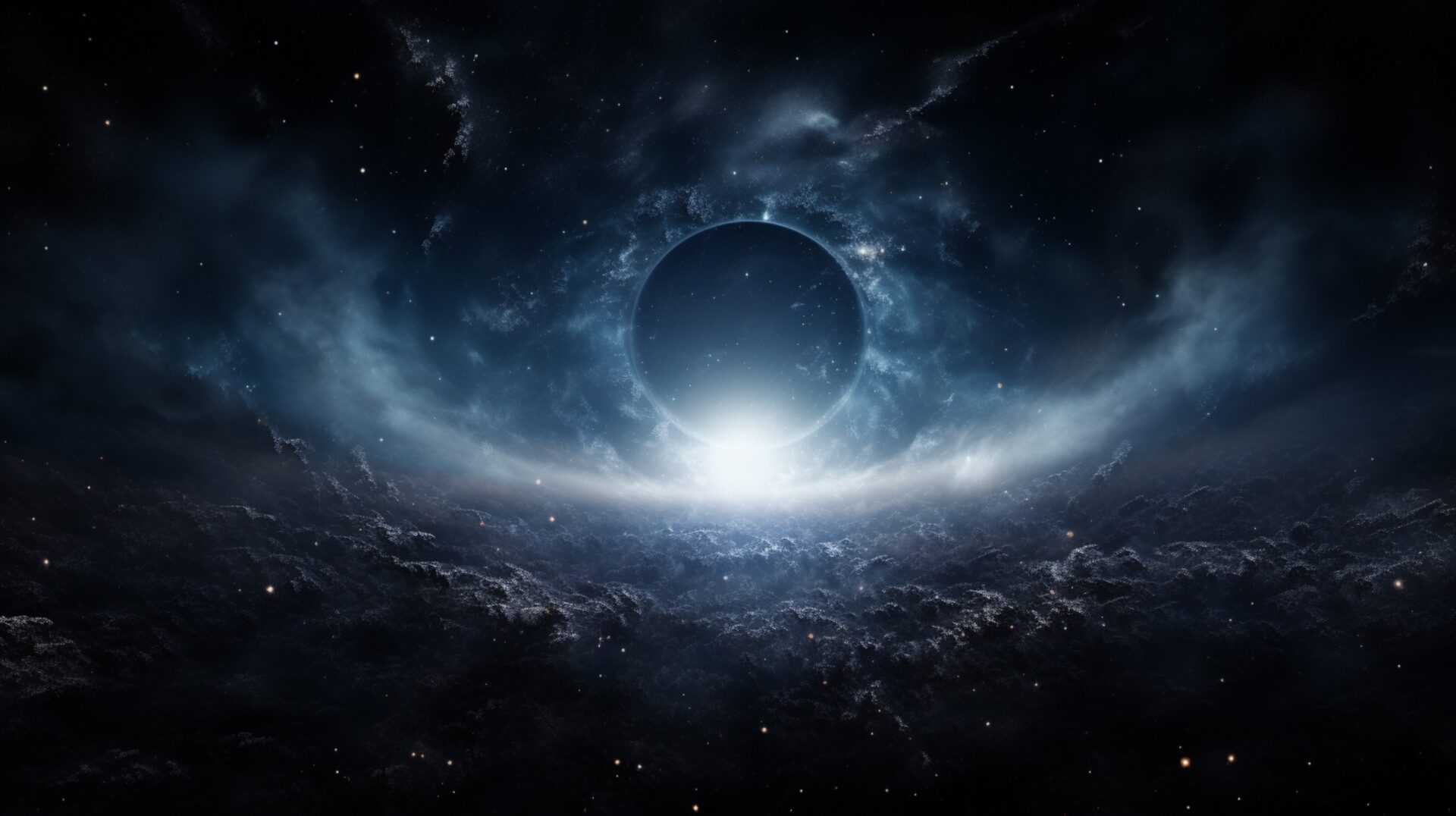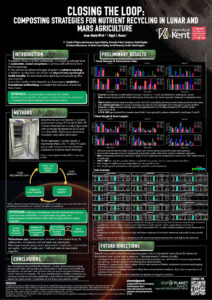Research Lines
At the KAIROS research group, we explore the frontiers of chemistry and physics in the context of astrochemistry, irradiation processes, (bio)molecular origins, and space applications. Our research lines are structured into four interconnected themes—Astrochemistry, Irradiation, Origins, and Space—each addressing fundamental scientific questions about the universe, its chemistry, and its potential for sustaining life. Below, we detail our main areas of focus.
Astrochemistry

Astrochemistry bridges the fields of astronomy and chemistry, focusing on the chemical composition and reactions occurring in interstellar and planetary environments. This research line is divided into two main areas:
Interstellar Chemistry
Understanding the formation and transformation of complex molecules in the interstellar medium, including processes in star-forming regions and protostellar disks.
Selected Publications:
J. Londoño-Restrepo, et al. More π, please: What drives the formation of unsaturated molecules in the interstellar medium?, Chem. Sci., 2025, DOI: 10.1039/D4SC07986H.
J. Zhang, et al. A systematic IR and VUV spectroscopic investigation of ion, electron, and thermally processed ethanolamine ice, Mon. Not. R. Astron. Soc., 2024, 533, 826–840, DOI: 10.1093/mnras/stae1860.
H. M. Quitián-Lara, et al. Decoding the molecular complexity of the solar-type protostar NGC 1333 IRAS 4A, Mon. Not. R. Astron. Soc., 2023, 527, 10294–10308, DOI: 10.1093/mnras/stad3873.
R. Ramachandran, et al. Amorphous 1-propanol interstellar ice beyond its melting point, Mon. Not. R. Astron. Soc., 2024, 530, 1027–1034, DOI: 10.1093/mnras/stae759.
Planetary Chemistry
Investigating chemical processes in planetary atmospheres, ices, and surfaces, with a focus on the roles of sulphur and carbon in extraterrestrial environments.
Selected Publications:
D. V. Mifsud, et al. Sulphur ion implantation into O2, CO, and CO2 ices: Implications for the formation of sulphur-bearing molecules in the Kuiper Belt, Icarus, 2024, 411, 115926, DOI: 10.1016/j.icarus.2023.115926.
R. Ramachandran, et al. Ultraviolet spectrum reveals the presence of ozone on Jupiter’s moon Callisto, Icarus, 2024, 410, 115896, DOI: 10.1016/j.icarus.2023.115896.
Irradiation

Research in irradiation explores the effects of energy inputs—such as particles, photons, and thermal conditions—on molecules and materials. It encompasses radiation-matter interactions and energy-driven chemical transformations, combining computational and experimental approaches. This research is structured into two main areas:
Molecules and Nanomaterials for Medicine
Developing molecular systems and nanomaterials for medical imaging, treatment, and combating diseases, including neglected tropical diseases. This research explores bioimaging applications, functionalised molecules for bioactivity, and radiation-induced transformations for healthcare advancements.
Selected Publications:
Í. A. O. Bozzi, et al. Electrochemical diselenation of BODIPY fluorophores for bioimaging applications and sensitization of 1O2, Chem. Eur. J., 2024, 30 (11), DOI: 10.1002/chem.202303883.
J. C. de Oliveira, et al. SuFEx‐functionalized quinones via ruthenium‐catalyzed C−H alkenylation: A potential building block for bioactivity valorization, Chem. Asian J., 2024, 19 (22), DOI: 10.1002/asia.202400757.
M. D. Dickers, et al. Atomistic modelling and structural characterisation of coated gold nanoparticles for biomedical applications, Eur. Phys. J. D, 2023, 77 (7), 141, DOI: 10.1140/epjd/s10053-023-00726-1.
K. Haume, et al. Gold nanoparticles for cancer radiotherapy: A review, Cancer Nanotechnol., 2016, 7 (1), 8, DOI: 10.1186/s12645-016-0021-x.
Molecules and Nanomaterials for Energy and Sustainability
Designing advanced molecules and nanomaterials for energy conversion, organic electronics, and sustainability. Highlights include photovoltaics development, exploring strained and open-shell compounds for electronic applications, and understanding material responses to radiation for improved energy processes.
Selected Publications:
A. V. Solov’yov, et al. Condensed matter systems exposed to radiation: Multiscale theory, simulations, and experiment, Chem. Rev., 2024, 124 (13), 8014–8129, DOI: 10.1021/acs.chemrev.3c00902.
J. C. Blakesley, et al. Roadmap on established and emerging photovoltaics for sustainable energy conversion, J. Phys. Energy, 2024, 6 (4), 041501, DOI: 10.1088/2515-7655/ad7404.
A. Gärtner, et al. Highly strained arene-fused 1,2-diborete biradicaloid, J. Am. Chem. Soc., 2022, 144 (46), 21363–21370, DOI: 10.1021/jacs.2c09971.
C. Saalfrank, et al. CAAC‐stabilized 9,10‐diboraanthracenes—Acenes with open‐shell singlet biradical ground states, Angew. Chem. Int. Ed., 2020, 59 (43), 19338–19343, DOI: 10.1002/anie.202008206.
Origins

This theme explores the origins of molecules and life, merging theoretical chemistry and prebiotic chemistry. It is divided into two sub-lines:
Origin of Molecules (Chemical Bond Theory)
Developing quantum mechanical methods to understand chemical bonding and investigating unique bonding patterns in main-group and transition-metal complexes.
Selected Publications:
T. M. Cardozo, et al. The chemical bond as a manifestation of quantum mechanical interference: Theory and applications of the interference energy analysis using SCGVB wave functions, in Comprehensive Computational Chemistry, Elsevier, 2024, pp 552–588, DOI: 10.1016/B978-0-12-821978-2.00027-1.
L. Araujo, F. Fantuzzi, T. M. Cardozo, Chemical aristocracy: He3 dication and analogous noble-gas-exclusive covalent compounds, J. Phys. Chem. Lett., 2024, 15 (14), 3757–3763, DOI: 10.1021/acs.jpclett.4c00826.
Origin of Life
Investigating the prebiotic synthesis of biomolecules under astrochemical conditions and simulating extraterrestrial environments to study life’s chemical precursors.
Selected Publications:
S. V. Singh, et al. Complex structures synthesized in shock processing of nucleobases – implications to the origins of life, Int. J. Astrobiol., 2021, 20 (4), 285–293, DOI: 10.1017/S1473550421000136.
S. V. Singh, et al. Shock processing of amino acids leading to complex structures—implications to the origin of life, Molecules, 2020, 25 (23), 5634, DOI: 10.3390/molecules25235634.
Space

Space research focuses on developing materials and techniques for sustainable exploration and habitation. This line is divided into two main sub-lines:
Space Materials
Investigating materials exposed to extreme space environments and developing radiation-resistant nanomaterials for space exploration.

Space Agriculture
Exploring the chemical processes essential for sustainable food production in space and developing soil analogues and growth techniques for extraterrestrial environments.

